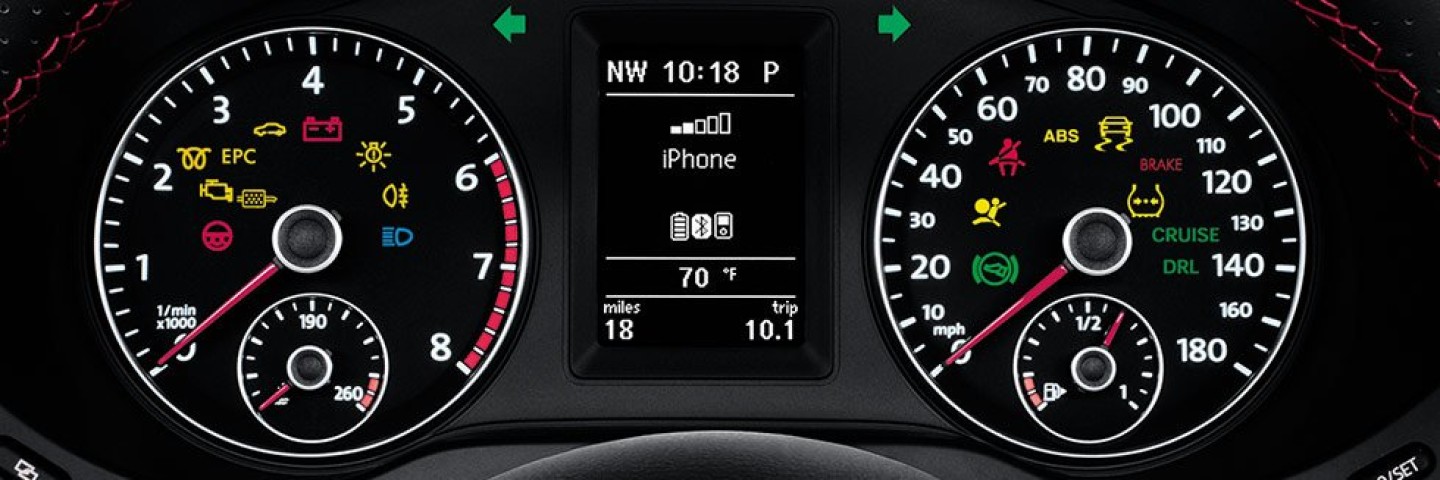No hay nada peor que ver un símbolo de advertencia que no conoce iluminarse en su tablero. Esto puede arruinar su viaje en un segundo y mantenerlo preocupado hasta que se resuelva. Porque en VW South Florida sabemos que las nuevas tecnologías pueden ser confusas, hemos creado una lista de todos los símbolos del tablero Volkswagen y lo que significa.
Symbol |
What is that thing? |
What does it mean for you? |
|---|---|---|
| Los símbolos en esta sección no requieren acción inmediata... | ||
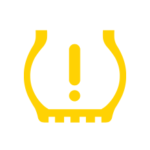 |
Presión baja en las llantas: Este símbolo amarillo significa que tiene presión baja en las llantas o una falla en el sistema (cuando escuche una advertencia con sonido). | Revise la presión en todas tus llantas y verifique que no estén rotas. Si no hay un daño evidente en las llantas, asegúrese que no estén perforadas por algún clavo o tornillo. Con el tiempo las llantas también pueden perder el aire por varias razones, como por ejemplo que se desgasten o que pierdan la tapa de la llanta. Dependiendo del estado de su llanta, añádale aire, repárela o cámbiela. |
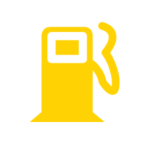 |
Poca gasolina: Este símbolo señala que debes añadir gasolina. | El tanque está vacío y está manejando con las reservas. Haga una parada en la gasolinera más cercana y rellene el tanque. |
 |
Poco líquido de limpieza del parabrisas: Este código amarillo le deja saber que debe rellenar el líquido de limpieza del parabrisas. | Cuando tenga tiempo, compre líquido de limpieza del parabrisas para su vehículo. No añada agua ni detergente de limpieza de cristales ya que pueden manchar permanentemente el parabrisas o dañar el sistema de riego. |
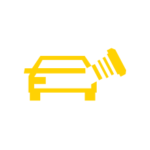 |
Tapa de gasolina suelta o perdida: Este código le deja saber que la tapa de gasolina no está totalmente apretada o que no está presente. | Asegúrese de que la tapa esté ajustada y segura para que no entre aire en el motor. Si su tapa no se enrosca correctamente o está perdida, busque un remplazo lo antes posible. |
 |
Bloqueo de cambios: Este símbolo verde le deja saber que debe apretar el freno para manipular los cambios del vehículo. | Apriete el freno para poder manipular los cambios. (Manejar, Reversa, Parqueo, etc.) |
 |
Capó abierto: Este símbolo rojo le deja saber que la cubierta del automóvil está abierta. | Esto significa que el capó del vehículo no está correctamente cerrado. Asegúrese que la cubierta de su vehículo está completamente cerrada antes de continuar manejando. |
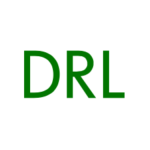 |
Daytime Running Lights (DRL): Este código de Volkswagen le deja saber que las luces diurnas están encendidas. | Este símbolo le deja saber que las luces diurnas están encendidas y funcionando correctamente. De haber un problema con sus luces diurnas o su sistema, este símbolo NO se iluminará. |
 |
Fallo de bombilla: Su sistema le mostrará este símbolo si detecta un voltaje fuera de lo normal en cualquiera de los circuitos de bombillas. | Eche un vistazo a todas las bombillas y encuentre la que no funciona correctamente. Recuerde verificar los focos delanteros, DRL, focos traseros, luces de advertencia de freno y señales de cambio de carril. |
 |
B-X 32: Fallo de bombilla de matrícula: Este ícono amarillo significa que una o más bombillas en la matrícula de su auto están fundidas. | Llévelo a un especialista a que le remplacen la bombilla o cómprelas y remplácelas usted mismo. |
 |
Fallo en sensor de lluvia: El sistema automático de limpia parabrisas está apagado. | Prenda y apague su vehículo y verifique que la advertencia se halla apagado. Si permanece encendida, contacte un centro de servicio autorizado de Volkswagen. |
| Los símbolos de esta sección deben ser atendidos prontamente… | ||
 |
Fallo en bombillas de frenos: Este ícono le deja saber que una o más bombillas de frenos están fundidas. | Este símbolo se ilumina para notificar que las bombillas de los frenos no están funcionando. Recuerde arreglarlas pronto ya que puede causar un accidente o recibir un boleto de infracción. |
 |
Antilock Braking System malfunction: El sistema ABS está diseñado para prevenir que las llantas se tranquen en un frenado de emergencia y así evitando que patine o se deslice en la carretera. | Considere llevar su vehículo a reparar lo antes posible. Esto se debe a que, dependiendo del modelo, los pedales de freno se pueden hacer más difícil de presionar o que no respondan. |
 |
Error en la batería: Poco voltaje en el alternador. | Este símbolo significa que hay un problema en el sistema de encendido de la batería. Esto puede ser debido a que el alternador esté gastado. Remplace la batería o lleve su vehículo al mecánico. Mientras tanto, recargar la batería debería ser suficiente. |
 |
Inmovilizador: Significa que ha insertado la llave incorrecta o que su llave no ha sido aceptada por el vehículo. | Este símbolo se enciende usualmente cuando la llave no ha sido reconocida, así que despreocúpese de que se encienda mientras maneja. Si ve esta advertencia, intente sacar y reinsertar la llave. Para los modelos con llaves electrónicas, revise que su llave tenga batería. Si aún no puede encender su auto, entonces llévelo al mecánico. |
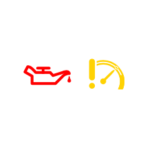 |
Presión de aceite: Este símbolo significa que no hay presión de aceite. | Apague su vehículo tan pronto pueda. Revise los niveles de aceite cuando el motor ya se halla enfriado. Si tiene poco aceite, añada el aceite recomendado y la advertencia debe apagarse en los próximos 5 segundos. De lo contrario, contacte a servicio en la carretera. |
 |
Nivel de aceite bajo: Esto indica:
|
Espere a que el motor se enfríe y revise los niveles de aceite. Si están bajos, añada el aceite recomendado (confirme con el manual del dueño). Si la advertencia continúa encendida, llévelo a un mecánico profesional. |
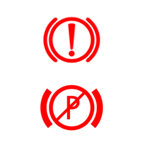 |
Emergencia: Este ícono rojo puede significar:
|
Verifique si tiene la emergencia puesta y desactívela. Si continúa enseñando la alerta, o si se enciende y se apaga mientras maneja, significa que debe añadir solución de frenos. Si este ícono nunca se apaga, entonces debes llevarlo a que lo inspeccione un profesional. |
 |
Volante:
|
Esto significa que no hay suficiente “Steering Fluid” o que hay una falla en la asistencia de manejo del volante. El volante será difícil de mover así que debe llevarlo al centro de servicio pronto. |
 |
ESP/ASR (Electronic Stabilization Program/Anti-Slip Regulation): Este ícono significa que el ESP/ASR está inactivo. Si parpadea rojo, entonces significa que se activó el ESP/ASR momentáneamente. | Si esta advertencia se ilumina momentáneamente mientras maneja significa que perdió el control momentáneamente. Sin embargo, si continúa encendido, existe una falla en el sistema. Llévelo al centro de servicio lo antes posible. |
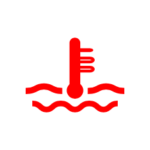 |
Bajo nivel de Coolant / Temperatura alta: Este ícono se enciende cuando el motor está demasiado caliente y está en riesgo de sobrecalentarse. | Si está manejando cuando se encienda este ícono, estacione en el carril de emergencia lo antes posible y apague su motor. Deje que se enfríe por lo menos 30 minutos antes de intentar de remover la tapa del radiador… y recuerde usar protección para evitar quemaduras. Revise los niveles de Coolant y añada agua temporeramente para que pueda manejar al centro de servicio. |
 |
Falla de transmisión automática: Hay potencialmente un problema con la transmisión automática o en los dispositivos del sistema de monitoreo. | Este ícono significa que hay un problema con la transmisión, posiblemente el nivel de solución de la temperatura, nivel de fluidos o presión. Haga una cita con el centro de servicio prontamente. |
 |
Desgaste de frenos: Este ícono se ilumina para indicar que los frenos están desgastados. | Debe llevar su auto al centro de servicio para cambiar los frenos. |
 |
Problema con el airbag: Esto significa una falla en el airbag o en el sistema de tensión de los cinturones, o que el airbag del pasajero está desactivado. | Lleve su auto a un centro de servicio cualificado para que diagnostiquen y arreglen el problema. No hacerle caso a ese ícono puede arriesgar su vida ya que, en caso de emergencia, su airbag no abrirá. |
| Los siguientes íconos son súper importantes - ¡Lleve su vehículo al centro de servicio ahora! | ||
 |
Electronic Power Control (EPC) – Exhaust Gas: Este símbolo amarillo significa que hay una falla en el motor. Lleve su vehículo a un centro autorizado de VW. | Si su tablero muestra este ícono EPC, es señal que necesita llevar a su Volkswagen a ser reparado inmediatamente. Debe tener suficiente energía para llegar al centro de servicio… maneje directo hacia allí. |
 |
Falla del motor: Si este ícono de fallas al motor se enciende en su tablero, traiga su vehículo al centro de servicio certificado por Volkswagen. | La luz indicadora de fallas del motor puede señalar tres tipos diferentes de problemas: si parpadea, indica una falla temporal del mantenimiento del motor. Cuando permanezca encendida constantemente, necesita servicio de motor. La señal más grave es cuando la MIL parpadea todo el tiempo. Es una señal que el motor de su vehículo está fallando. Cualquier advertencia en el tablero relacionada al motor significa que debe llevar su automóvil al centro de servicio inmediatamente. |
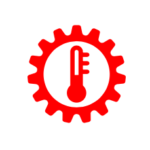 |
Direct-Shift Gearbox (DSG®): Transmisión demasiado caliente. | ¡Pare! Detenga el vehículo en el carril de emergencia. Permita que la transmisión se enfríe con el cambio puesto en Park y llame a servicio a la carretera inmediatamente. |
| Estos íconos aparecen solamente en vehículos diésel. | ||
 |
Alerta de niveles bajos AdBlue®: Esta alerta significa que los niveles de diésel de escape están bajos. | Aunque no afecta su seguridad, este ícono significa que va a tener dificultad encendiendo el motor y, eventualmente, va a prevenir que arranque su auto. Tráigalo al centro de servicio lo antes posible. |
 |
AdBlue® System Malfunction Warning: Significa que no hay líquido del escape de diésel o que no ha sido rellenado con la solución estándar de AdBlue®. | Lleve su auto al centro de servicio Volkswagen para que revisen y rellenen los fluidos en el vehículo. |
 |
Advertencia de no encendido AdBlue®: Significa que no hay diésel en el sistema y debe ser rellenado. | Su vehículo no encenderá una vez lo apague. Llévelo al centro de servicio lo antes posible. |
 |
Flujo previo del motor diésel antes de encender el motor: Cuando este ícono se enciende sólido significa que el flujo previo del motor diésel antes de encender el motor está activado. Si parpadea, significa que ha ocurrido una falla en el motor diésel. | Si esta advertencia se enciende sólida al encender el vehículo, simplemente significa que su motor está en proceso de calentamiento y que podrá arrancar su VW momentáneamente. Si la luz está parpadeando, significa que hay un problema con el sistema que calienta el motor, y debe llevarlo al centro de servicio pronto. |
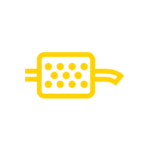 |
Filtro: Este símbolo significa que su filtro está tapado con residuos. | Es muy probable que tenga residuos acumulándose en el filtro. Intente manejar en la autopista por lo menos a 40 MPH para que el calor los queme. Si continúa encendido este símbolo, llévelo al centro de servicio y remplace el filtro. |
| Los vehículos híbridos tienen este símbolo adicional… | ||
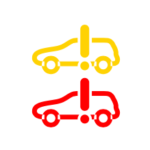 |
Falla en el sistema de manejo híbrido: Esta advertencia le indica que hay una falla en el sistema híbrido. | Visite un concesionario Volkswagen o uno de sus centros de servicio. Este símbolo le indica que debe estacionarse, apagar el motor y llamar a asistencia en la carretera. |
Ahora que conoce lo que estos indicadores significan, sabrá cómo lidiar con ellos. Si está en busca un centro de servicio experto en VW, échele un vistazo a uno de nuestros 11 concesionarios, convenientemente localizados desde el norte de Palm Beach hasta el condado de Miami-Dade. ¡Estaremos encantados de ayudarlo!
